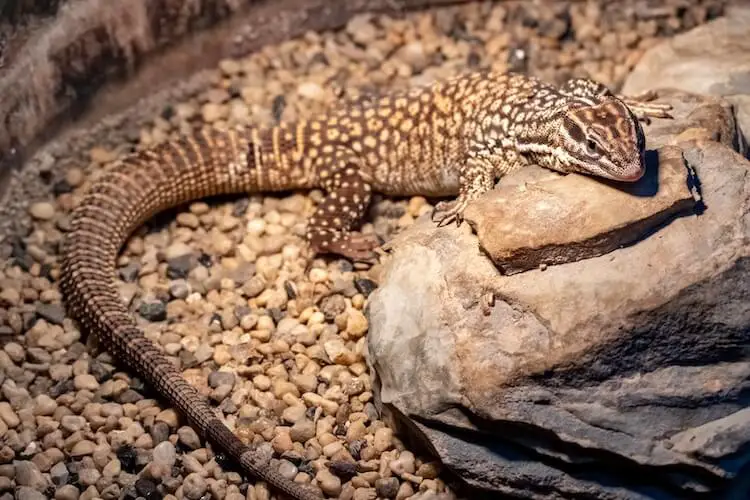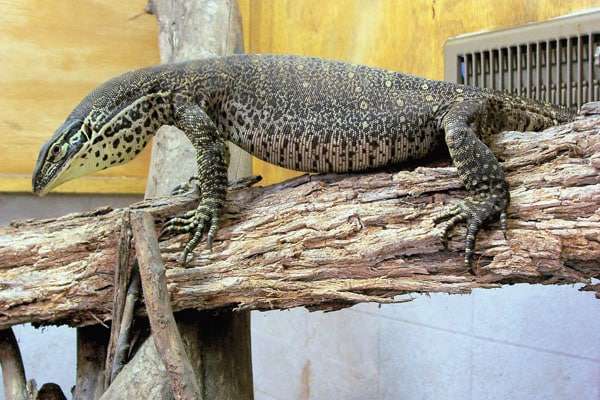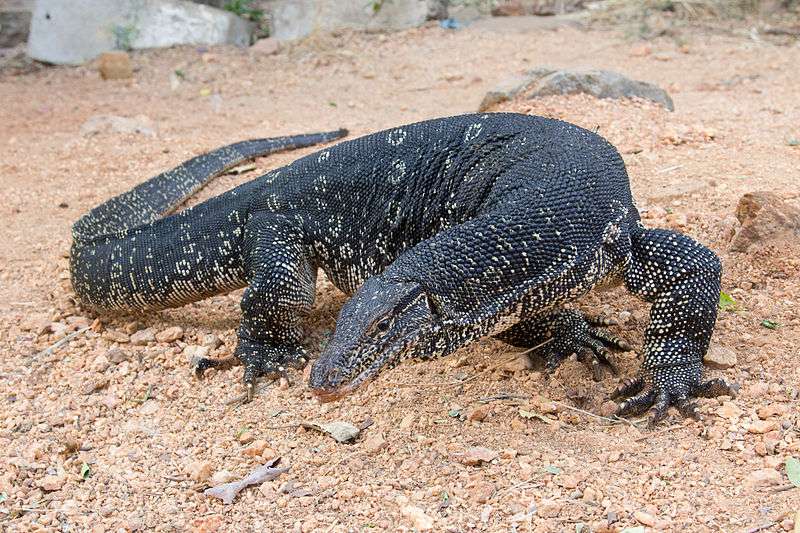
Description:
Scientific name: Varanus macraei
Life span: Up to 10+ years in captivity
The blue spotted tree monitor has a prehensile tail that is extended about 2/3rd the length of its body. They have slender, long, and widely spread limbs that have 5 short, long-toed, and sharp digits. Their neck seems to be rather lengthy, yet it is only as big as the head. The neck is surrounded by a nuchal scale that is smooth in texture. When compared to the caudal scales, which are keeled and grouped in distinct rings, the nuchal scales, which are situated near the neck, are smooth. The body color is mostly black or extremely dark gray with turquoise-blue ocelli markings that are somewhat flat and arranged dorsolaterally. It has bands of blue-gray down its whole tail. The belly is a greyish-light blue in color with some dark grey-mottled skin. They have light pink-colored tongues.
Native Region/Habitat
The blue spotted tree monitor lizard is native to New Guinea, the Vogelkop peninsula, Batana, and Irian Jaya (Indonesia).

Behavior:
The blue-spotted tree monitor lizard is diurnal and arboreal in nature. They can climb uneven surfaces and rough tree branches easily with the help of their razor-sharp claws. They utilize their prehensile tail, similar to how chameleons do, to hold objects as they move among the trees. However, unlike chameleons, monitors may quickly uncoil their tails to employ a protective whip by coiling it on a plane parallel to their body. Similar to how squirrels do, this anxious species avoid prospective predators by climbing trees and keeping the tree trunk between itself and the invader.
Care As a pet/In captivity:
The adult blue-spotted tree monitor lizard needs intense care and a large enclosure of 4’x 2′ x 4′. Blue Tree Monitors are native to tropical regions. For them to control their body temperature, the cage must have a colder region and a basking area. One side should include all of the heating and lighting components, while the other side will be colder. There should be a 95–100 degree area for basking. The temperature within the cage can range from 75-80 degrees Fahrenheit. The temperature can fall as low as 78 degrees Fahrenheit at night. They will also need places to hide because they have a tendency to be anxious. These monitors will find the covered hiding places they seek in hiding boxes or tree trunks.
Table





